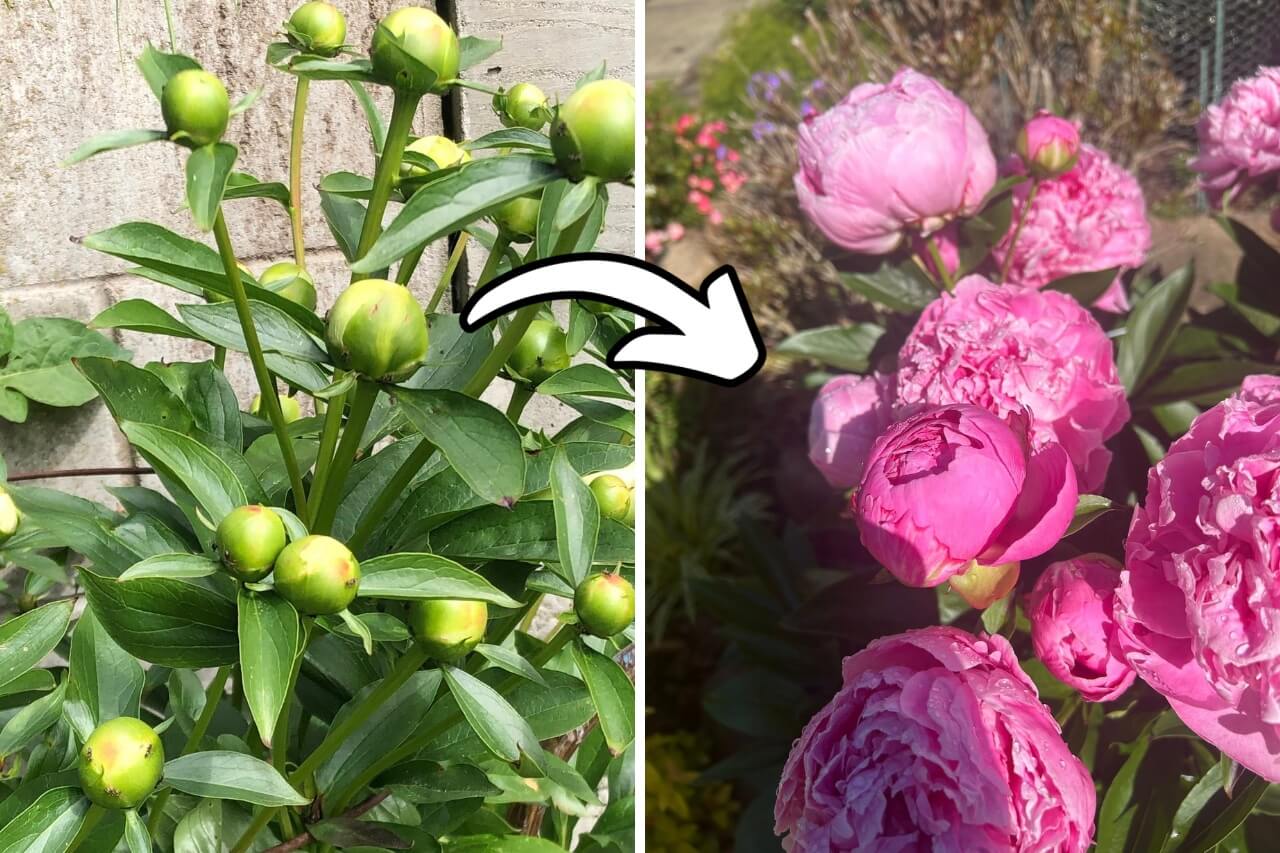Peonies are among my favorite flowers. I love their stunning, large, and fragrant blooms.
However, they have a problem. Their blooming period often feels all too short, and there is just no time to fully enjoy them.
Luckily, there are several strategies to help peony blooms last longer in the garden. I use some of them, and I’ll list below my favorite ones, followed by five common mistakes to avoid.
Plant Peonies in Full Sun (with a Heat Caveat)
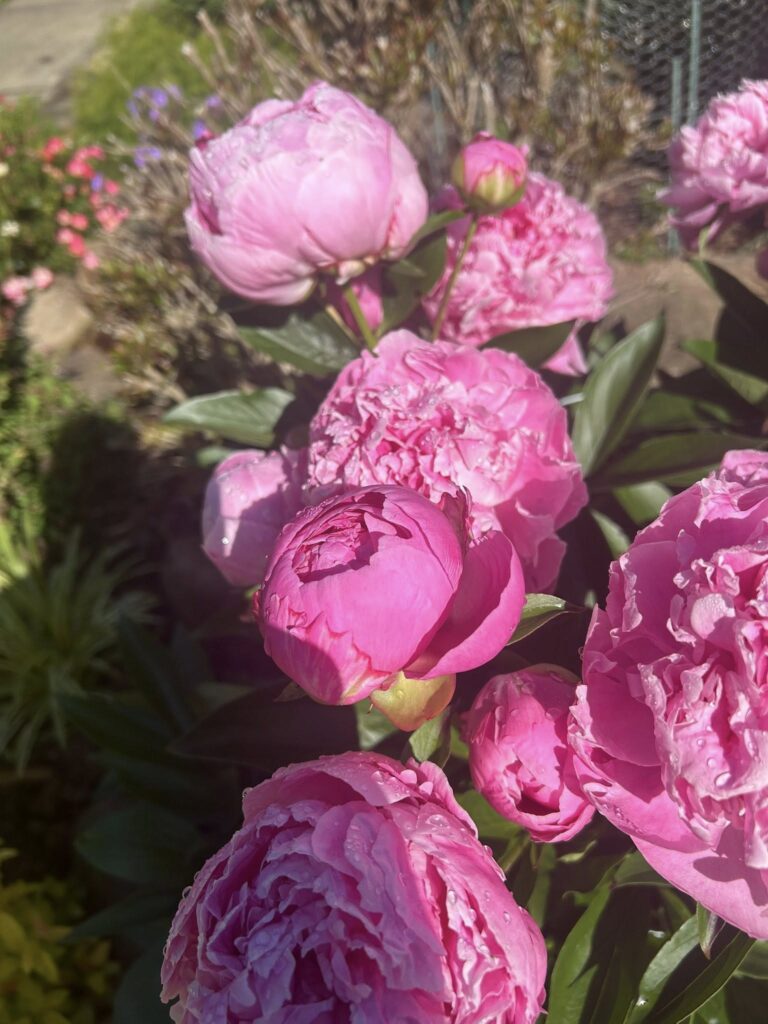
Give peonies a spot with 6–8 hours of sunlight for the best blooms. In most U.S. regions, full sun is ideal, though in very hot climates (southern zones 8–9) a bit of afternoon shade can prevent scorching.
Remember that Peonies will not bloom well in deep shade, but morning sun with some afternoon shade can actually help blooms last longer in intense heat.
Plant at the Correct Depth
One of the most critical planting tips is not to bury peony buds too deep.
The pink or white growth buds on the tuber should sit only about 1–2 inches below the soil surface.
If planted deeper than this, peonies may grow foliage but fail to bloom. And remember that when transplanting a potted peony, you should keep the crown at the same level it was in the pot.
Use the Right Soil
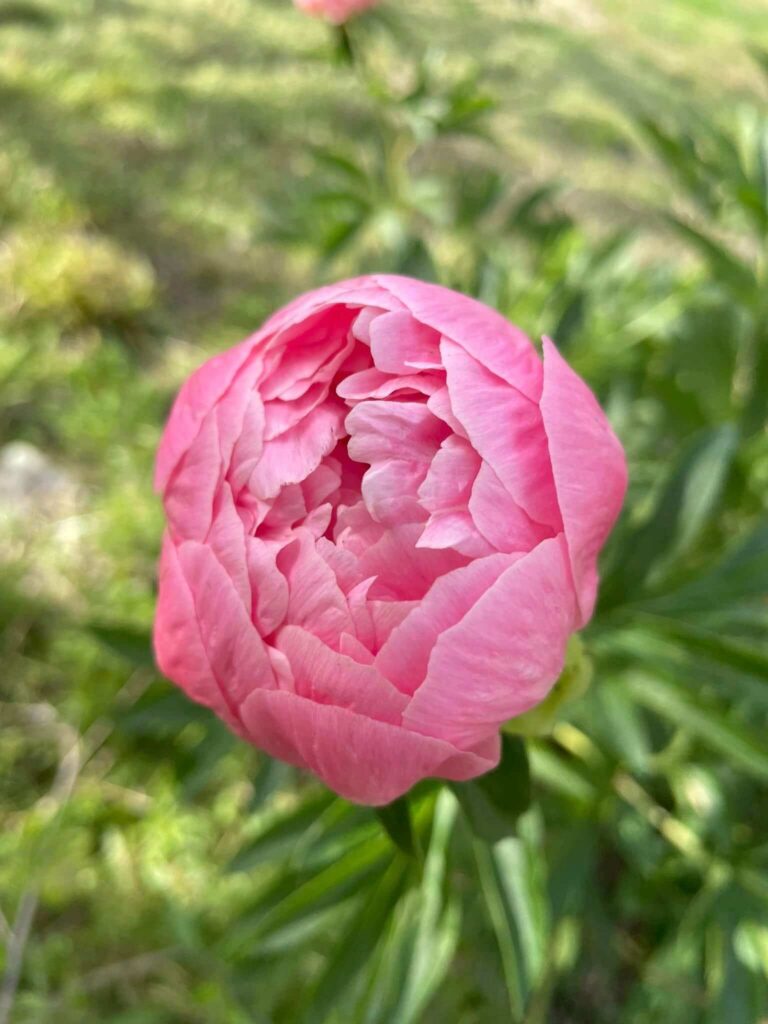
In general, Peonies love loose and fertile soil with good drainage.
This is what I do. Before planting, I enrich the area with organic matter like compost or well-rotted manure. By doing this the soil will be well nourished and structured.
My soil is mostly heavy clay so I also mix in sand and compost to loosen it up and prevent soggy conditions.
Remember that for peonies good drainage is essential. These kinds of perennials hate waterlogged soil.
The Right Way to Fertilize
Feeding your peonies can support more blooms, but use a light touch with fertilizer.
As with many plants, too much nitrogen will encourage lots of leafy growth at the expense of flowers.
So if you notice a peony with big green foliage and few or no blooms, it has probably been over-fertilized.
In early spring, once you see new shoots, apply a balanced, slow-release fertilizer. Organic options like bone meal or well-balanced compost can also work.
Have a look at the easiest wasy to compost and that every gardener should know.
Mulch to Keep Roots Cool and Moist
Since I put a layer of organic mulch around my peonies, I have seen significant benefits in terms of bloom longevity.
As you probably already know, mulch helps regulate soil temperature and retain moisture.
So use mulch the plants to keep the roots cooler in summer and less stress on the plant. Sometimes it also suppresses weeds that would compete for water.
Apply about 2–3 inches of mulch around the base of the plant, but keep it a few inches away from the peony’s crown/eyes to prevent rot.
PRO GARDENER: If you live in colder zones, mulching in late fall protects the roots during winter freezes, ensuring a strong bloom next spring.
Support Heavy Blooms
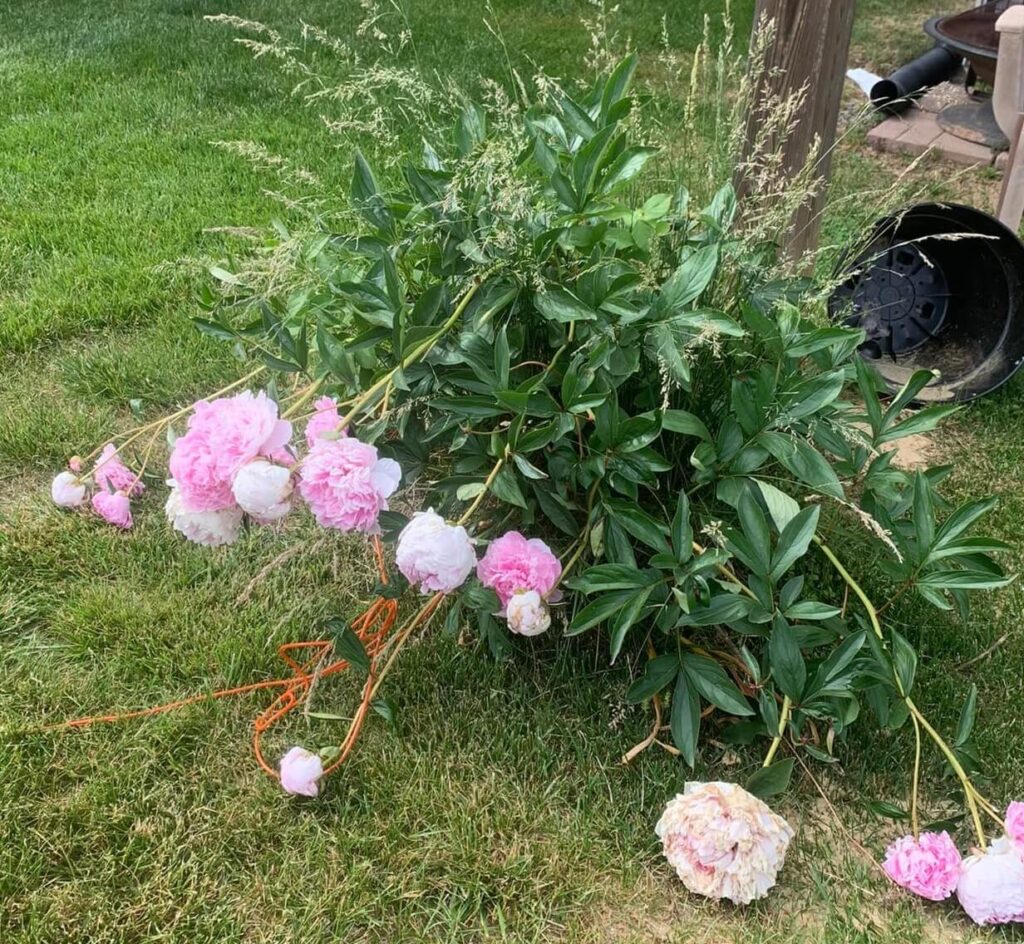
It could be hard for peony stems to hold up giant, fully-open flowers, especially during rain or wind.
You could (and should) provide support for your peony plants to keep blooms upright and lasting longer because, without support, stems may flop or break, shortening the life of the flowers.
In my gardening center, I saw specific peony rings that you could place around the plants in early spring, before they get too tall.
If you don’t have specialty peony rings, a simple tomato cage or a few bamboo stakes with twine can also work.
Deadhead Spent Flowers Promptly
If you see them, you should always remove faded blooms to help your peony plant conserve energy and even channel it into more flower production.
Once a peony flower starts to drop its petals, use pruners to snip off the spent bloom just above a leaf node. Remember to use clean ones, I’ve already explained why in this article.
This prevents the plant from developing seed pods (which take energy) and keeps the garden tidy.
Peonies generally bloom only once per year but deadheading ensures the plant’s energy goes into root and bud development for the next year’s flowers.
PRO TIP: Some peony varieties also have side buds that open after the main bloom. Deadheading the main flower allows light and energy to reach those side buds.
Ensure Good Air Circulation
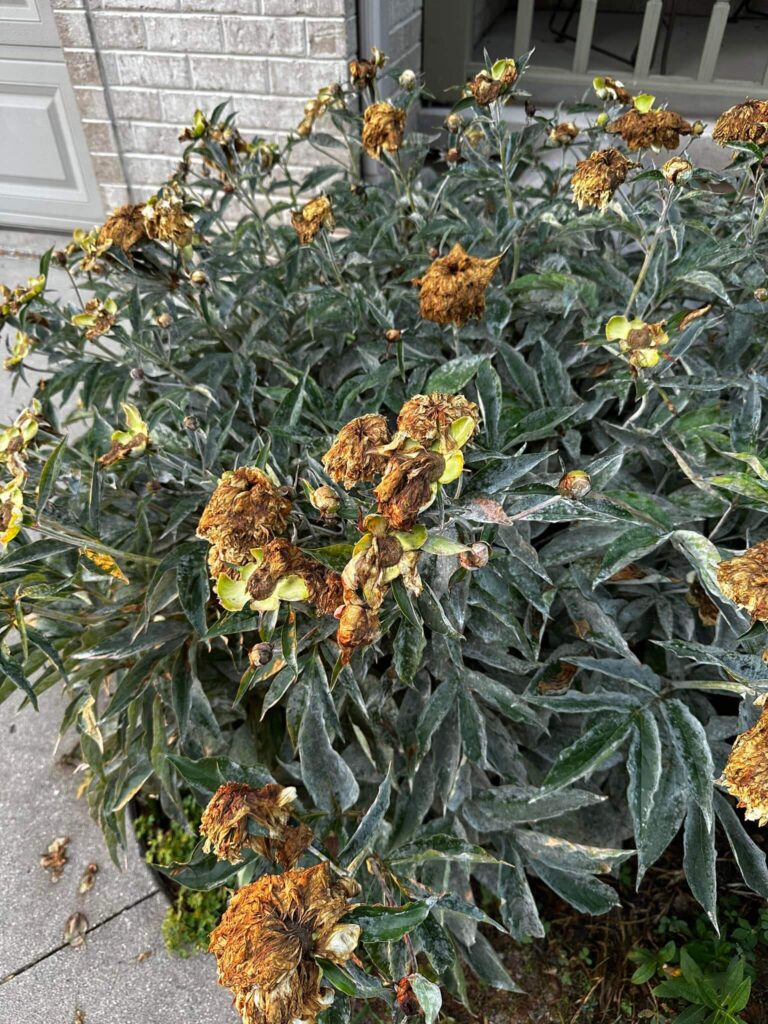
It applies somewhat to the whole garden, but particularly to peonies, crowded or damp conditions can shorten the life of blooms.
You should space your peony plants about 3–4 feet apart because good air circulation helps foliage dry off and prevents fungal spores from thriving.
It’s also wise to avoid overhead watering. As I always say, only water at the base to keep foliage dry.
In addition, remember that at season’s end, you should clean up peony beds by removing any fallen or dead leaves and stems. Debris can harbor diseases like botrytis blight over winter.
Peonies Varieties
Let me be very clear. Despite all the care you put into it, it’s very difficult for peonies to bloom beyond two weeks.
If you really want to enjoy the flowers for a longer stretch, you could consider planting a mix of varieties that bloom at different times.
Luckily, Peonies have early, mid, and late blooming types that together can extend the season by several weeks.
For example, you might plant woodland or tree peonies that bloom very early, herbaceous peonies that bloom in mid-spring, and intersectional peonies that often bloom later and into early summer.
With this variety you could enojoy continuous peony color from April through June.
Water Deeply and Consistently
Lastly, I wanna say that consistent water is key to ensure a long peony flowering. You should aim to give about 1 inch of water per week (from rainfall or irrigation) during the growing season.
They can usually handle short dry periods, I once had to stay away for a week and I didn’t have any problems, but extended drought can stress the plants (and they may bloom poorly if they’re too dry).
I always say this but remember to water deeply at the base of the plant and avoid wetting the leaves, so that moisture reaches the deep roots.
Also, ensure excess water drains away. To water your plants the right way, take a look at the common watering mistakes everyone should avoid.

